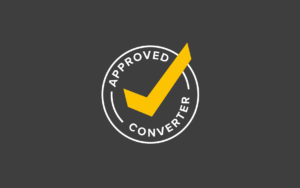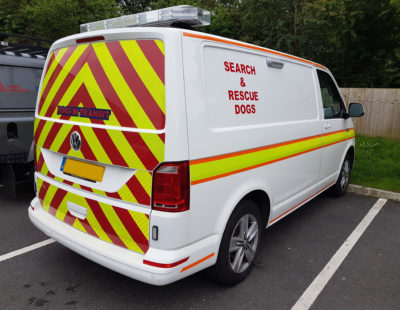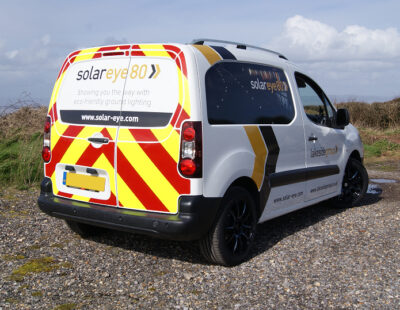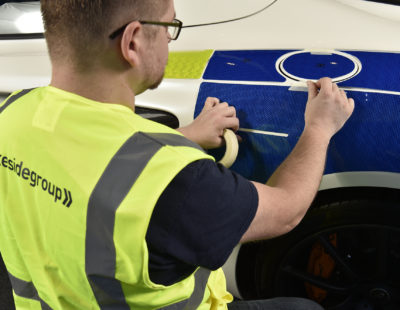All emergency vehicles need to be instantly recognised by other road users and pedestrians to ensure they can carry out their purpose effectively. For ambulances, this is even more imperative, as any delays could severely impact the paramedics’ chances of saving someone’s life.
Lakeside Group supply a range of reflective products to help protect the road safety of pedestrians, road users, and emergency vehicles. With over 30 years of industry expertise, we consistently supply top quality materials that perform for years to come.
In this article, we explain the importance of ambulance reflective markings, the relevant regulations, and how to choose the right reflective materials.
Importance of ambulance reflective markings
Quicker access to emergencies
In emergency situations, every minute counts. That’s why conspicuity markings are essential for ambulances and other emergency vehicles. Users will recognise their presence on the road more quickly and move their vehicle out of the way. As a result, ambulances will be able to travel unobstructed and unimpeded, and arrive at the scene in a shorter amount of time.
Visible in all conditions
Emergencies happen at all hours, and in all weathers. For that reason, ambulances need to have just as much visibility at night and in poor weather conditions as they do in the day. High quality retroreflective material ensures even darkness and fog cannot prevent them from being instantly recognised.
Protects staff safety
Paramedics may need to stop the ambulances in unexpected places to attend emergencies. Highly visible markings therefore ensure road users are aware that there is an incident occurring and drive extra carefully to ensure no one else gets hurt.
Prevents accidents
Ambulances travel at high speeds, with the recommending time from dispatch to arrival at scene standing at 8 minutes for the most urgent calls. As a result, they have the potential to become hazards themselves. Reflective markings make road users aware of their presence so they can get their vehicle out of the way promptly and prevent further accidents.
Passive visual marker
A siren may not be enough to alert pedestrians and road users to the ambulance’s presence. Those who are deaf or listening to music may not notice the vehicle quickly enough and may struggle to identify where the noise is coming from. As a result, passive visual markers provide additional conspicuity.
Ensures uniformity
Ambulances and medical vehicles can vary from area to area. Having uniform markings, however, ensures everyone can easily understand the purpose of the vehicle, ensuring any variation does not impede fast recognition.
Learn more about safety markings for different vehicles >
Regulations for ambulance reflective markings and tape
Clearly, ambulances and other first response vehicles need to be made highly conspicuous to ensure they can carry out their purpose effectively. Bright reflective livery is therefore a staple across all emergency vehicles in the UK, reflecting car headlights and other light sources in order to boost visibility of the vehicle.
The most common patterns used to distinguish emergency services in the UK are Battenburg Markings and Sillitoe Tartan. Battenburg markings consist of two horizontal rows of alternating blocks of colour – one light and fluorescent, and one dark.
Retroreflective materials are subject to the rules set out in The Road Vehicles Lighting Regulations 1989, which mainly clarifies the colours that can be used by different vehicles.
When it comes to ambulances, there is clear guidance. On the side of the vehicle, ambulances can use green, yellow, amber, and white reflective materials. And on the rear of the vehicle, police, fire, ambulance, DVSA, and HETO vehicles can all use red, yellow, and orange – generally in chevrons.
Read next: A Beginner’s Guide to Reflective Chevron Products
Buying reflective markings and tape for ambulances – things to consider
Colour
The colour of reflective markings used is integral to their effectiveness, and the ambulance’s compliance with regulations. Research found that the human eye’s response was strongest for the colour ‘Euro Yellow RAL 1016’, which is why this colour is now used across UK and EU emergency vehicles (source).
For ambulances, the specified darker colour that must be used in addition to this yellow is green. Ensuring ambulance markings follow this format is essential for providing a uniform appearance across the country and ensuring swift recognition.
Type
Specialist applications like markings for emergency vehicles require certain types of retroreflective materials. This is because these materials are serving a vital, lifesaving purpose, not just highlighting a brand.
For ambulances, prismatic materials should be used as these offer the optimum night time visibility. Prismatic materials like our Avery Dennison VisiFlex V-8000 reflective vinyl are formed of thousands of micro-prisms, and result in a much brighter, more luminous reflection than other options.
A Buyer’s Guide to Reflective Vinyl >
Grade
When it comes to emergency vehicles, there are also certain grade standards that need to be considered. The UK/EU specification that sets the standard for reflective materials used for ambulances is BS-EN-1789 – so it’s important to choose compliant products like our prismatic vinyl.
Read more: A Buyer’s Guide to Reflective Material for Vehicles
Durability
When choosing materials for ambulance conspicuity markings, it’s essential to consider durability. If the materials quickly wear and degrade, they may not function effectively – putting people’s lives at risk. Taking the time to locate high quality, long lasting materials not only reduces this risk, but it also helps maintain a positive public image.
At Lakeside Group, we supply industry leading Avery Dennison VisiFlex V-8000 vinyl in ambulance colours, allowing you to create highly effective reflective markings that last for years to come. Don’t just take our word for it, read this case study to find out more!
High quality retroreflective materials for ambulance markings
Lakeside Group have over 30 years’ experience safeguarding road users, pedestrians, and the emergency services with our innovative range of products. The emergency vehicle reflective we supply is easy to cut and apply, extremely durable, and even easy to remove if required. Strikingly bright day or night, it makes the ideal choice for ambulance road conspicuity.
Contact us for more guidance!
See more: Case Study – Welsh Ambulance Service
See more: Chapter 8 Compliant Vehicle Reflectives




